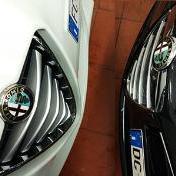Maserati Levante 2016
Quanto ti piace la Maserati Levante 2016?
230 voti
-
1. Quanto ti piace la Maserati Levante 2016?
-
Molto114
-
Abbastanza76
-
Poco30
-
Per niente9
-
- Si prega di accedere o registrarsi per votare a questo sondaggio.
-
Contenuti simili
-
Perché le auto elettriche (non) hanno il cambio? 1 2 3 4
Pubblicato da Gengis26,
- maserati ufficiale
- granturismo 2023
- (e 8 altri in più)
- 36 risposte
- 1635 visite
-
Maserati Grecale MY2025 (Spy da pag. 427) 1 2 3 4 411
Pubblicato da Ospite,
- grecale bev
- maserati grecale folgore
- (e 5 altri in più)
- 4105 risposte
- 839088 visite
-
- 88 risposte
- 12661 visite
-
-
-




























Messaggi Raccomandati:
Crea un account o accedi per lasciare un commento
Devi essere iscritto per commentare e visualizzare le sezioni protette!
Crea un account
Iscriviti nella nostra community. È facile!
Registra un nuovo accountAccedi
Sei già registrato? Accedi qui.
Accedi Ora